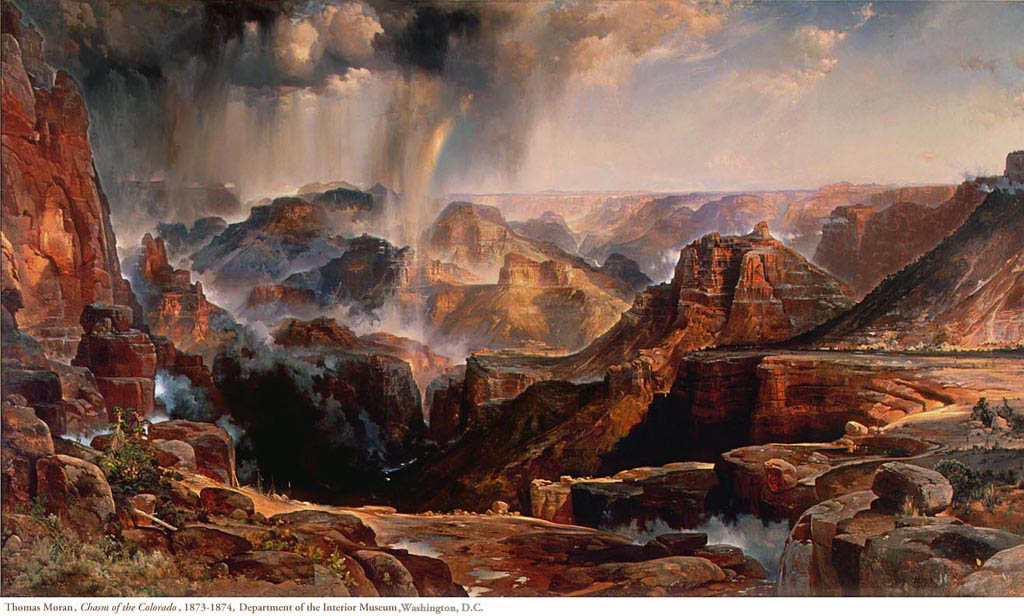| In 1872, John Wesley Powell asked Thomas Moran to join his survey of the Grand Canyon. Moran declined that first overture and went to Yosemite instead. He wasn't as artistically stimulated with Yosemite's landscape as he was with Yellowstone's, but he did do some work there. By the following year Moran was ready to paint the Grand Canyon and took Powell up on the offer.
His trip to the Grand Canyon was more fodder to his rising star, associating him with another explorer of the post civil war period. His first association had been with Ferdinand Hayden (explorer of Yellowstone, Tetons and the Colorado Rockies), and now he was cementing a relationship with an explorer, even more famous, who had led the first descent of the Colorado River through the Grand Canyon. The relationship would would be a mutually beneficial for both men. The two would continued to work together with Moran providing illustrations for Powell's reports over the next few years.
After visiting the Grand Canyon in 1873 and making sketches, Moran returned to the East. Using his sketches, and aided by photographs provided by Powell, he spent the winter painting in his studio.
The result, the "Chasm of the Colorado," is as impressive in size as it is artistically. It measures 7 x 12 feet, and like Moran's Yellowstone painting, it was wildly successful.
As you view the painting, you'll see that Moran has positioned the viewer under the rim of the canyon, on a ledge high above what may or may not be the river. The depths are so great and dark that's it's difficult to tell whether the river can be seen or not. Beyond the viewpoint, in the recesses below, the Canyon turns and angles away in the distance.
A few rocks and plants in the foreground help provide perspective of the immense scale encompassed by the painting. A squall passing over the canyon leads the eye downward into its depths from which mist rises and hovers along the edges of ravines and precipitous side canyons. This is a vast and almost unfathomable scene: a place of where the heavens mix with a great rent in the face of the earth. This is not an Eden. There are no balanced or comfortable forms nor soft, golden light. It is raw, unrestrained nature. It is what, in the 19th century, was called sublime: an intimidating landscape of great and terrible depths, of fearsome heights, of storms and of danger just a step away from the edge.
Sublime and profitable. Moran's monumental work of the Grand Canyon became the second of his paintings to be purchased by Congress. He received the princely sum of $10,000, and the painting was hung in the Senate lobby along with his painting of Yellowstone canyon.
Powell, who introduced Moran to the canyon and who knew it better than anyone, from the river and rim, gushed with praise when he saw the finished painting:
"It required a bold hand to wield the brush for such a subject. Moran has represented the depth and magnitudes and distances and forms and color and clouds with great fidelity, but his picture not only tells the truth. The somber shadow in the foreground, the light in the distance, the great clouds that roll in the gulches, the cloudlets that hide in the chasms and creep along the face of the cliffs - all of these features and many others so are so arranged as to give a most vivid and grand picture." --John Wesley Powell |

